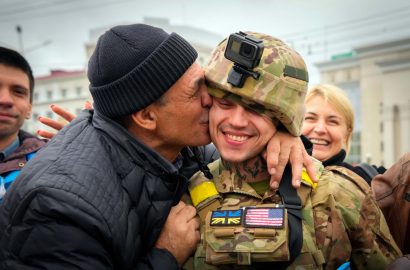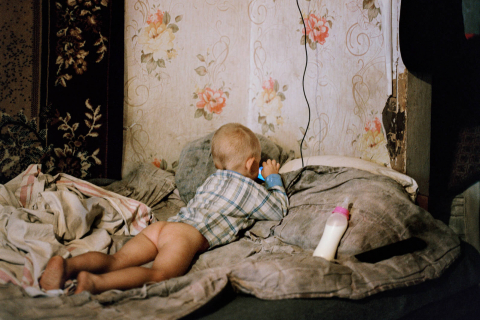
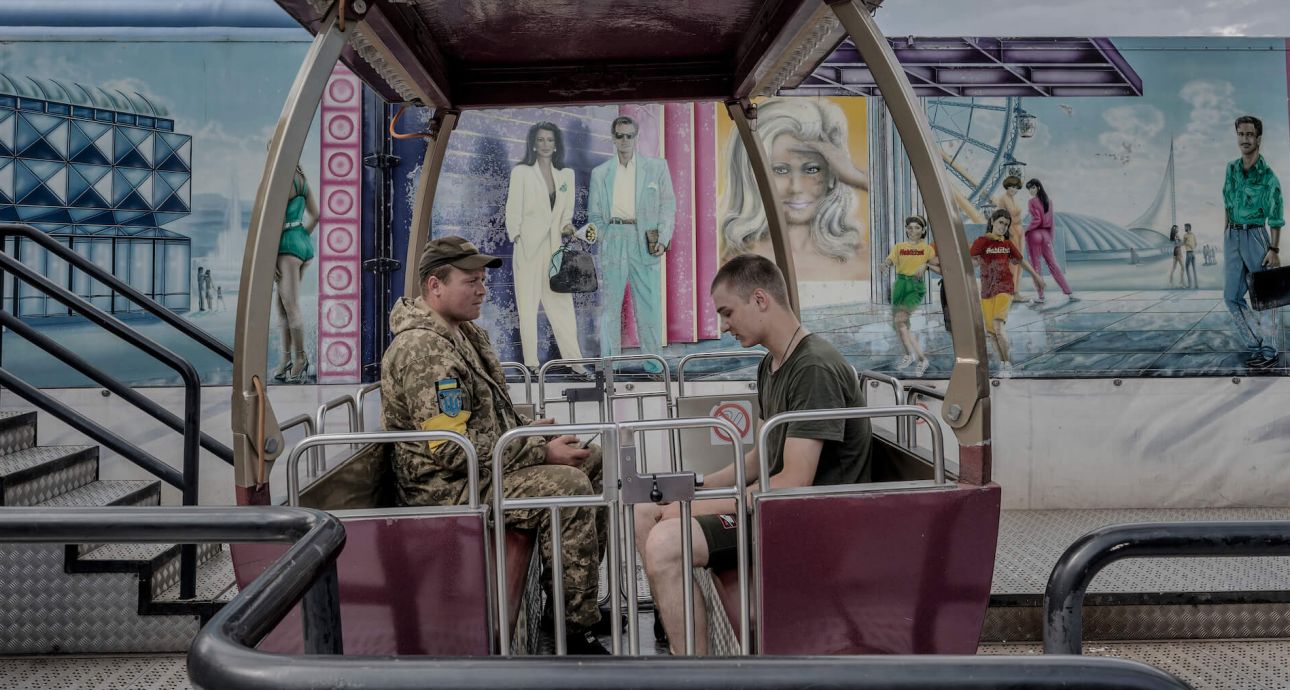
Ten Iconic Photos from the War by Laetitia Vancon
French documentary photographer Laetitia Vancon previously explored complex social issues – the crisis of identity or cultural belonging. Her works have been published in The New York Times, National Geographic, Geo Magazine, Vanity Fair, Der Spiegel, and others. Now, her focus is on war. When she arrived in Ukraine in the summer of 2022, Laetitia took numerous photographs that quickly became recognizable and iconic. Among them are vivid figures of graduates dancing in front of sandbags in Odessa, the unwavering gaze of a woman standing amidst her destroyed apartment, and many others. Latisha shared with Bird in Flight her ten most significant photographs from Ukraine.
Graduation
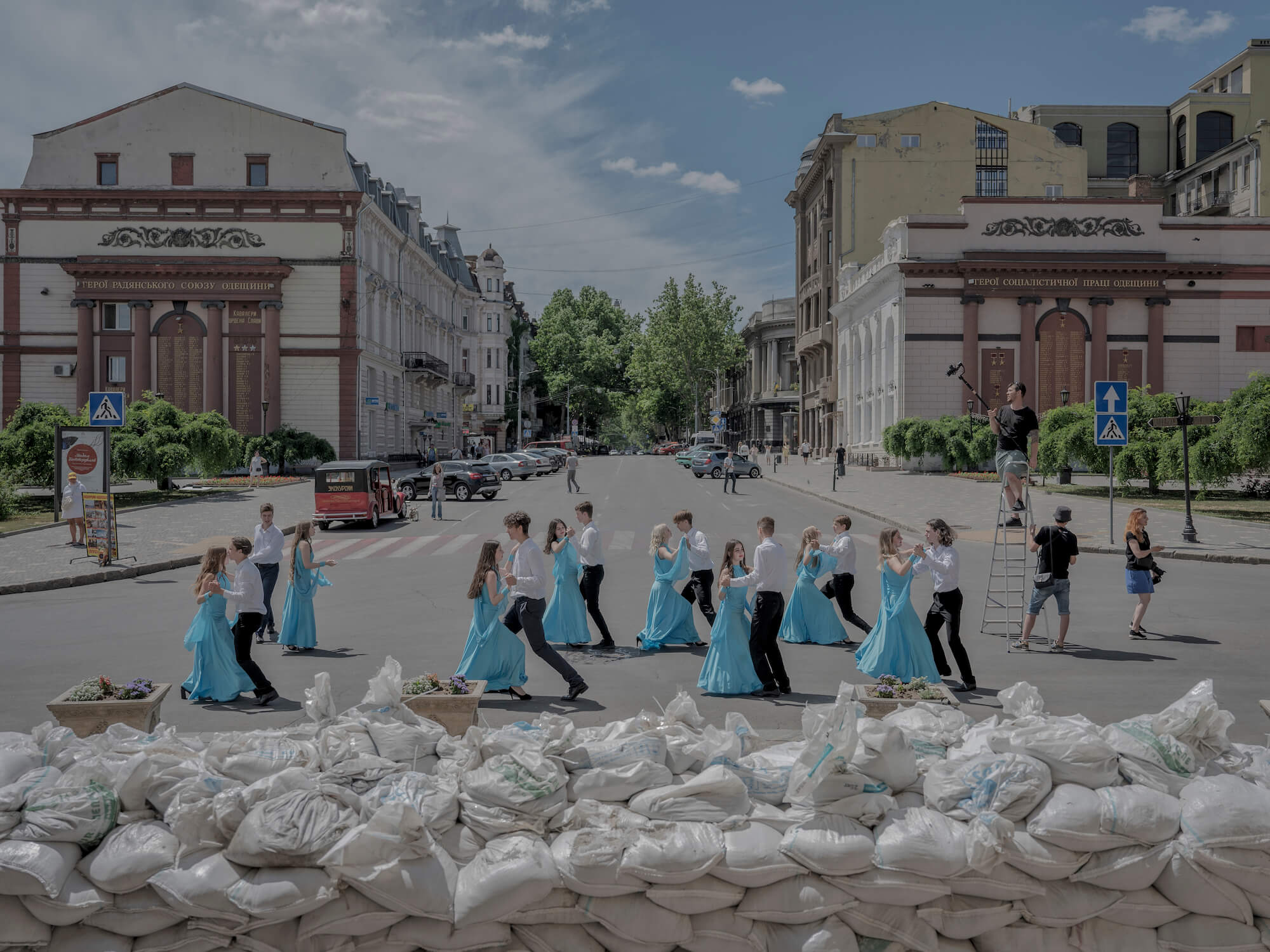
When the full-scale Russian invasion began, I was working in Georgia, Moldova, and other countries, documenting the flow of refugees across the border. To photograph within Ukraine itself, I had to undergo special safety training, which I did. In the summer, I found myself in Odessa. I was expecting to witness the horrors of war, but instead, I encountered a vibrant, warm, and lively city.
I was very fortunate with this photo – I took it in June 2022, one of the first shots. My fixer and I were planning to buy tickets to the National Opera, where performances had recently resumed. As we approached the theater building, I saw some bright colors and couldn’t understand what it was. Only later did I realize that it was high school students dancing in the square in front of the opera house. Due to the state of war, they were not allowed to have a full-fledged graduation ceremony. So they decided to perform this final school dance and capture it on film to mark the completion of an important stage in their lives.
I really love how it turned out. The photograph looks almost perfect, as if I took it on a film set. It became the photo of the year according to The New York Times.
Soldiers in the amusement park
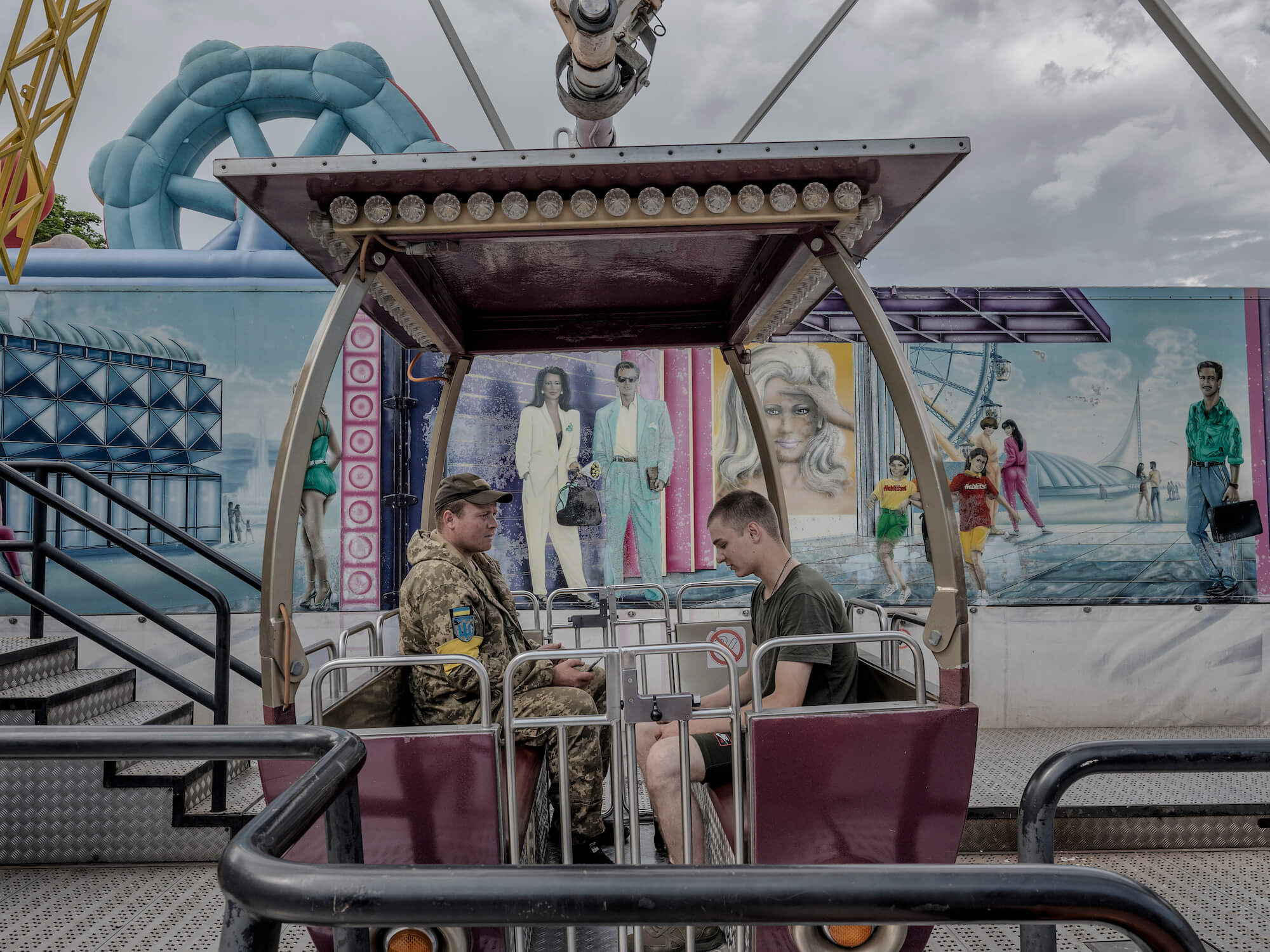
In Odessa, I worked in collaboration with a journalist who was tasked with writing an article for The New York Times. When we arrived in the city, he didn’t have a clear vision for his future piece. He walked around Odessa, gathering people’s stories and trying to grasp a narrative to write about. Consequently, I had no guidance regarding which photographs would accompany the article. Therefore, I also roamed the city, seeking to understand it and documenting the everyday life amidst the war. I captured people who held onto their usual rituals, reclaiming a sense of normalcy. It seems that I managed to find a slightly different perspective from which the war-torn country didn’t appear as distant and bloodied as it usually does, but rather relatable and ordinary. This helped our readers establish a stronger connection with the Ukrainian people.
When I encountered two soldiers in the amusement park, I thought they perfectly embodied the spirit of Odessa with its humor, relaxed approach to life, and love for friendly banter. Moreover, this scene showcased another side of the soldiers: they were not only brave warriors but also regular people who enjoyed riding the carousel. And behind them were the drawings from Odessa’s pre-war life. Hence, this photograph holds multiple layers of meaning.
I always try to avoid photographing people with wide smiles on their faces. It immediately narrows down the interpretation of the image to just one possibility – viewers see the smiles and automatically assume the photo is happy. When there are no smiles, it creates space for reflection and deeper interpretation: perhaps these soldiers are happy, or maybe they are feeling sad, or even grieving. Each person finds something of their own in their postures and expressions.
Swimming pool
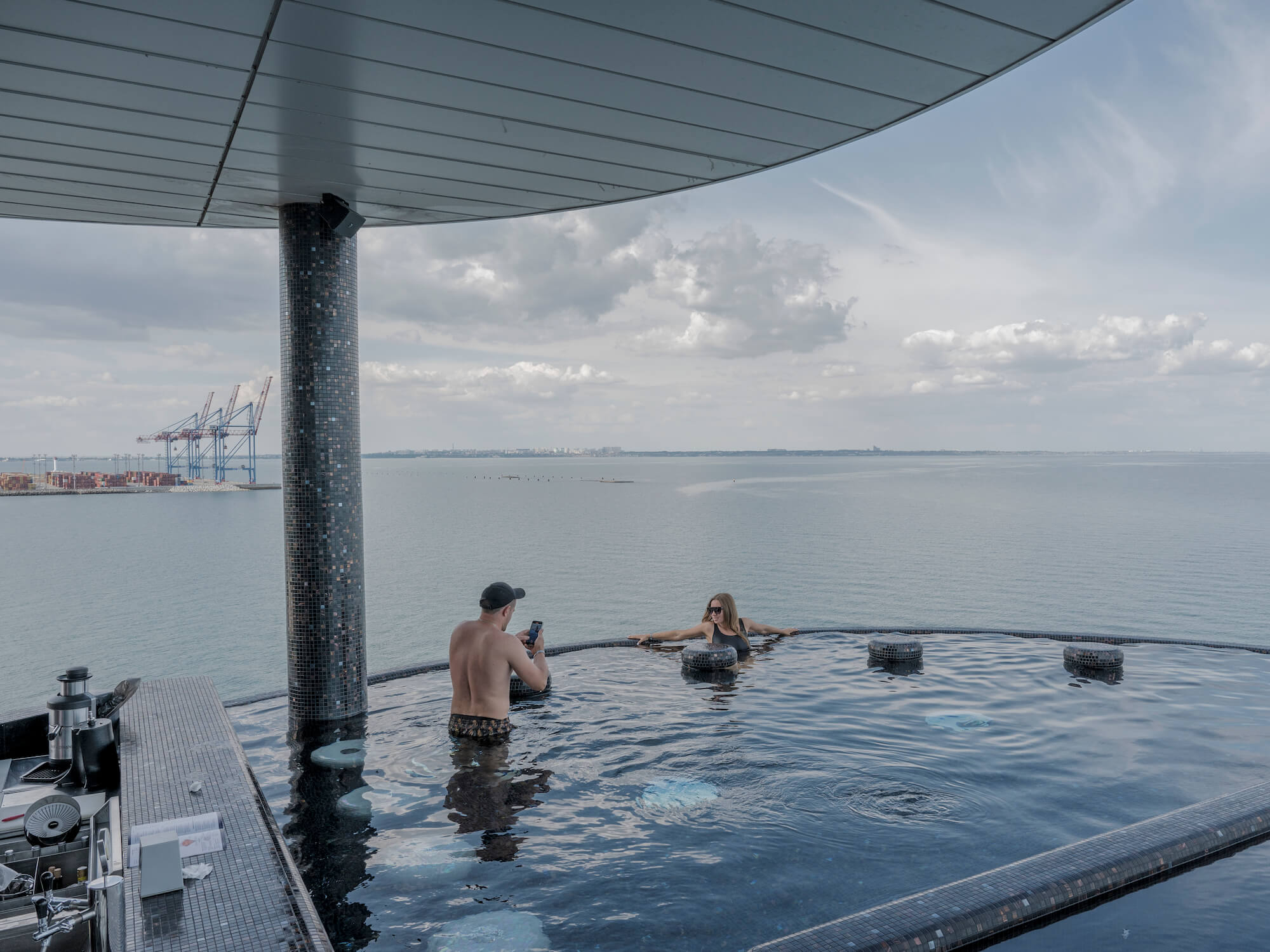
Currently, the seaside essentially serves as the front line. However, looking at this photo, few would think about it. This hotel is located near the Odessa seaport, a military facility with strict access restrictions for visitors and photographers. Nevertheless, anyone can go up to the rooftop of the nearby hotel, have lunch at the restaurant, and take a picture in the swimming pool, which offers a splendid view of the seaport. Furthermore, behind the woman, about a hundred kilometers away, is Mykolaiv – a city that has suffered and continues to suffer from devastating shelling and a lack of drinking water. It looks somewhat surreal.
I had the opportunity to talk to this couple. I told them, “I feel a bit uneasy about you taking a photo against the backdrop of the seaport. Do you plan to post the picture on social media?” They replied, “No, of course not. This photo is just for our memory.” They came to Odessa for a vacation and wanted to enjoy their time despite the war. I think I understand them. People need to hold onto something familiar to endure horrifying events. I know there are those who ignore the war and live as if nothing has happened. But with this photo, I wanted to show something else – the desire not to surrender happy moments of life to the enemy.
Volunteers
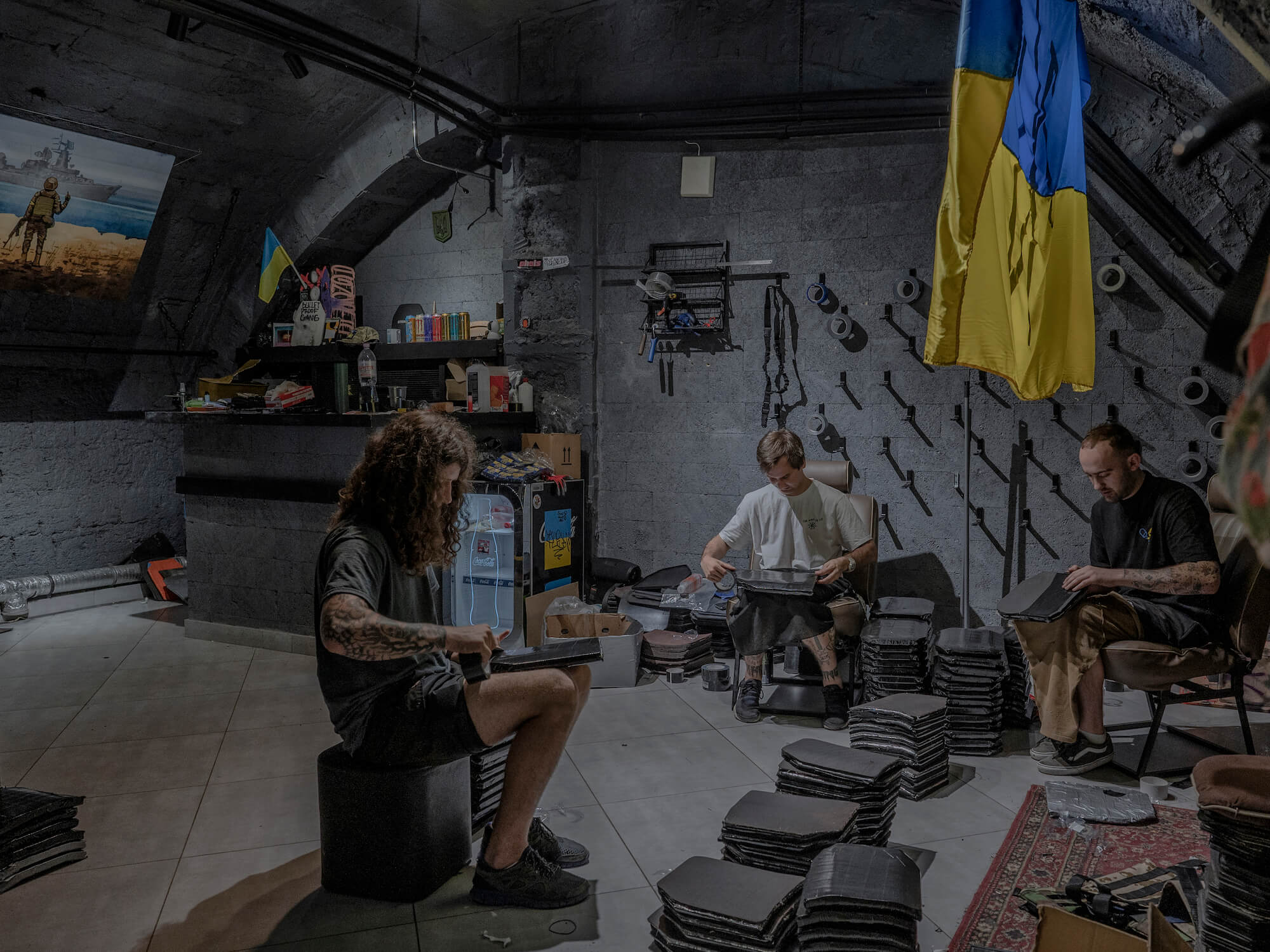
One day, while walking down the street in Odessa, I saw a little child wearing a bulletproof vest. I was so surprised! I approached their parents and asked how it happened that the child was wearing a bulletproof vest. They laughed and said it was a souvenir from a group of Odessa volunteers who sew bulletproof vests for the military. I decided that I should get to know them.
The volunteers turned out to be very young people who were previously involved in street racing. When the full-scale invasion began, they quickly came together and started helping the Armed Forces. They set up their base in the basement of a store that used to sell clothing for racers. Ironically, it is located on Pushkinska Street. Nowadays, the volunteers spend their days sewing bulletproof vests, meticulously checking their durability.
This photo is important to me because it shows how everyone can contribute to their country during wartime. These young guys chose to sit in the basement for hours and sew crucial military gear instead of hanging out and racing their cars. It’s truly inspiring.
Anna
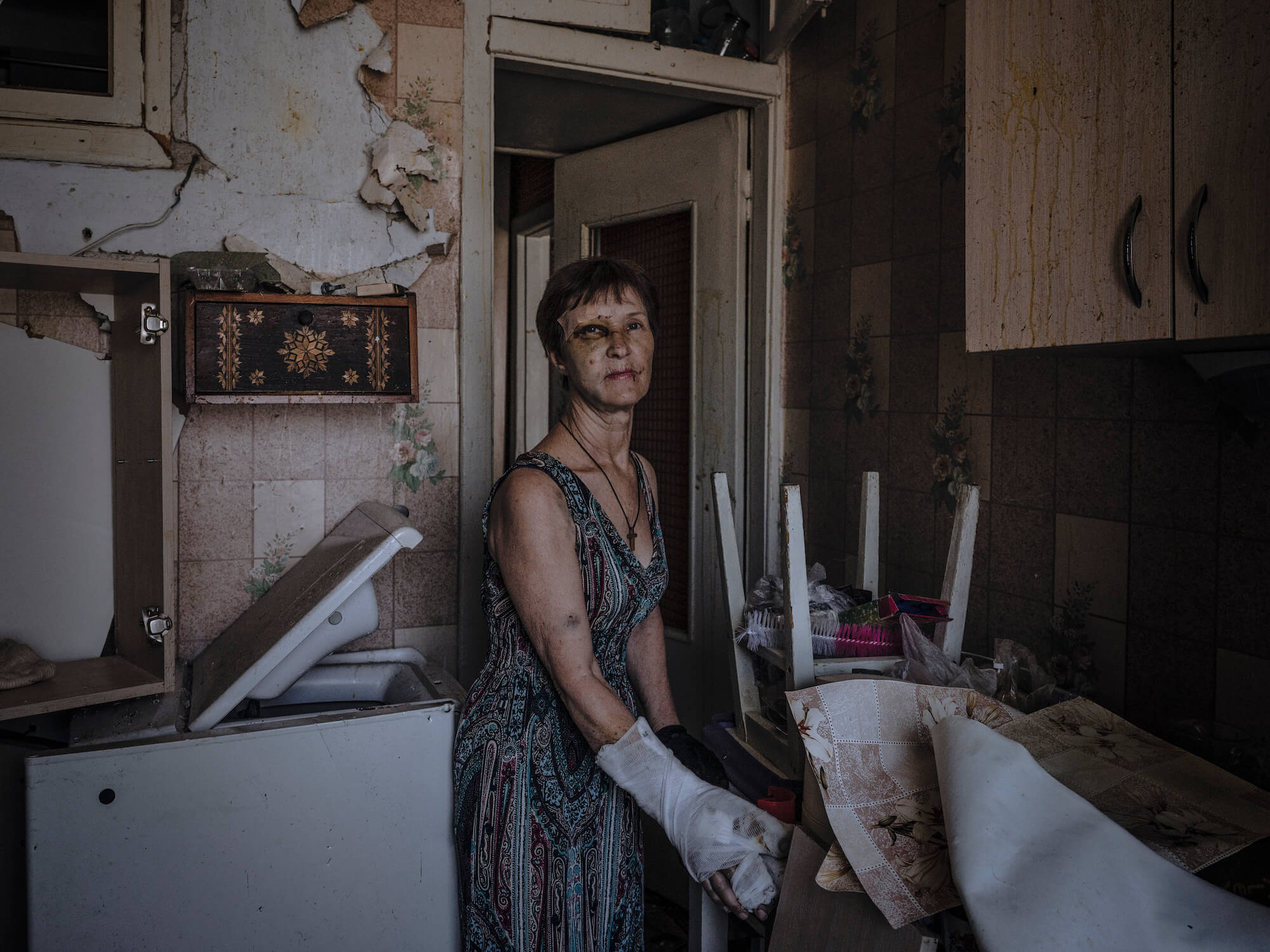
This is Anna. She has spent her entire life in Mykolaiv. In the summer of 2022, she lost her apartment due to a rocket hitting her building. At the moment of the explosion, Anna was actually opening the refrigerator. That saved her life. Debris and shrapnel hit the open refrigerator door, narrowly grazing her hand. If it weren’t for that, she probably would have been killed.
When I met Anna, three days after the blast, she was trying to salvage whatever belongings she could from her apartment. Her composure and dignity amazed me, evident in everything she did. I wanted to capture that feeling in my photograph and convey it to the viewers. Despite being injured, Anna holds her head high and looks boldly ahead. For me, the photo is not about fear but about the miracle that this woman represents.
Lavra
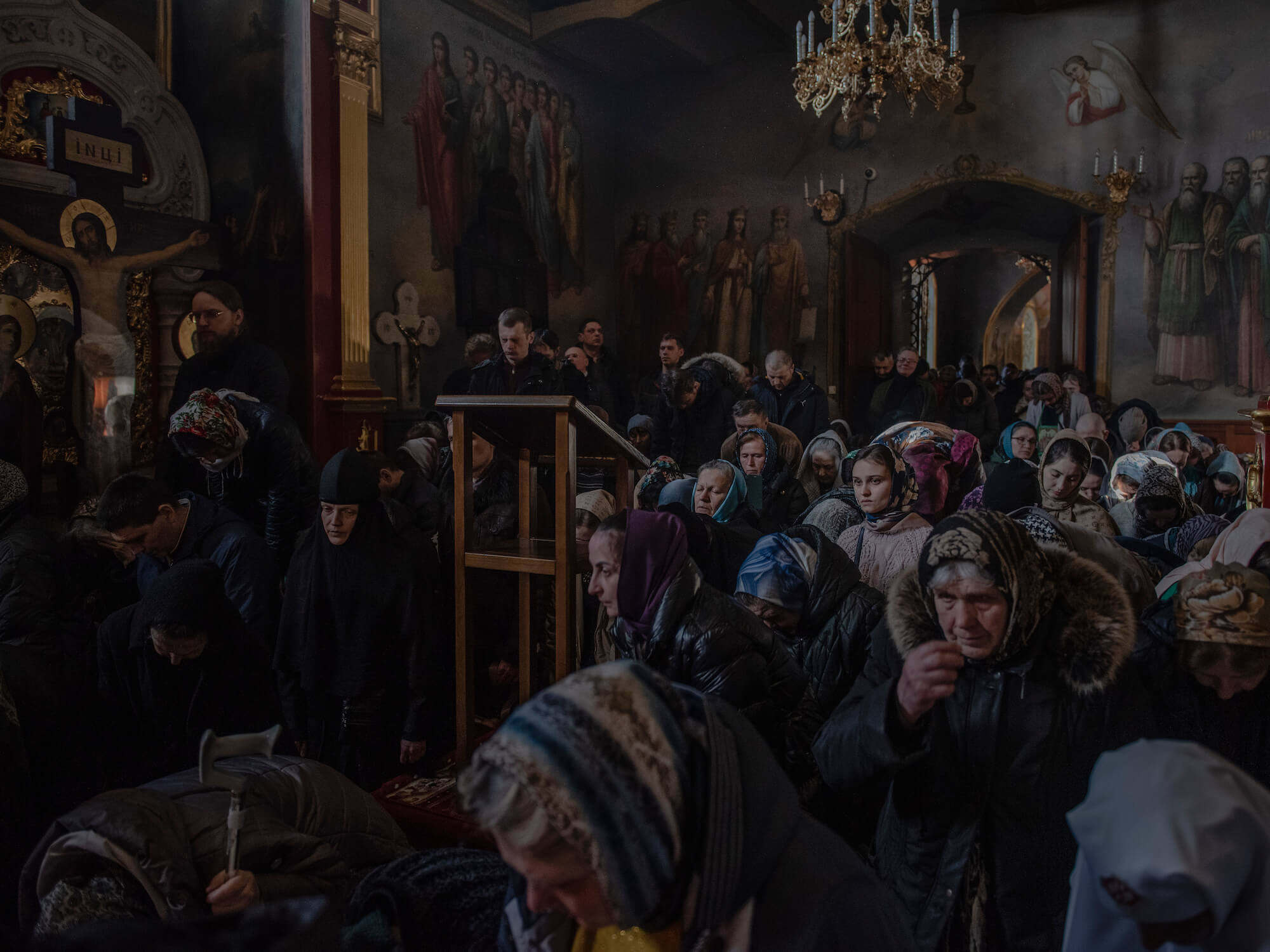
After my trip to Odessa and Mykolaiv, I returned to Kyiv in March-April 2023. At that time, the situation around the Kyiv Pechersk Lavra was intensifying. I took this photo on March 30, the day when the Moscow Patriarchate was supposed to vacate the premises. I was fortunate to be allowed inside because I knew one of the monks, Pavlo. He refused to comment on the situation but granted me access to the Lavra during the service.
The scene that unfolded before my eyes resembled a gathering of some sect. The people who came to the church, with their gloomy demeanor and stern faces, blended with the images of saints on the walls. It seemed as though the worshipers themselves became part of it, intertwining with the ancient paintings. When the Minister of Culture arrived at the Lavra, people barricaded the passage with their bodies. They claimed that religion is separate from politics, but of course, it wasn’t true.
Bucha
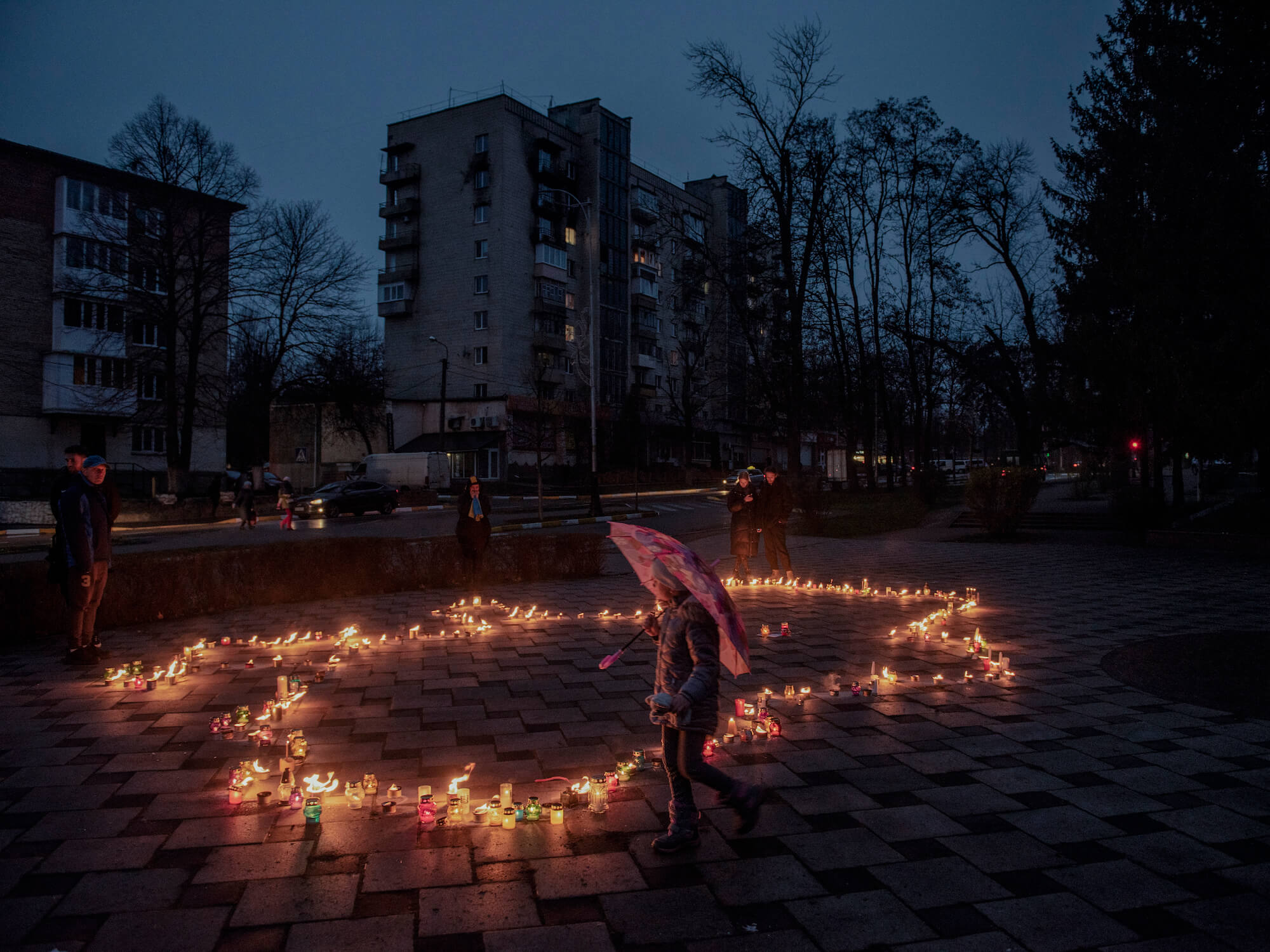
I arrived in Bucha on March 31st, on the anniversary of the liberation of the city from Russian occupation. On that day, a poignant candlelight ceremony was held in memory of the fallen. An exhibition of portraits of soldiers who gave their lives during the de-occupation of Bucha was organized on the main avenue of the city.
Throughout the evening, the map of Ukraine, illuminated by candles, attracted a large crowd of people and journalists. I walked there in the rain, searching for the perfect angle. Suddenly, the square emptied, and only a little girl with an umbrella remained near the map. I knew it was my moment. I took the photograph and later realized that it contained multiple layers, just like many others: the darkness of the evening and the glow of the candles, the joyful walk of the little girl and the memory of the fallen, new life and life lost. And in the background stood a battered house, with warmly lit windows. It looks hopeful.
Children on a tank
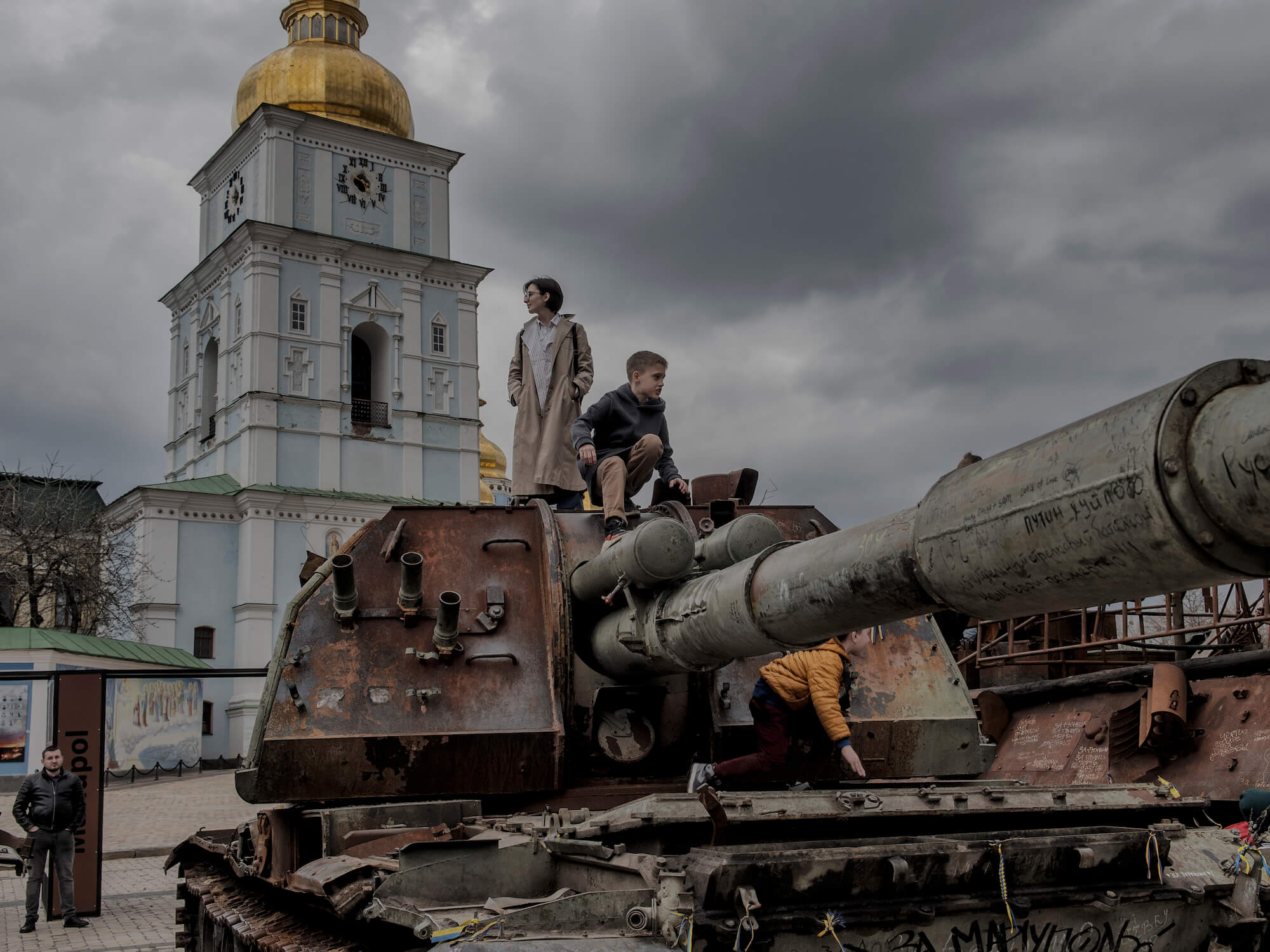
This is a typical Sunday in Kyiv. Mykhailivska Square is filled with people strolling on their day off, and little children are climbing on the burnt-out Russian military vehicles located in the city center. Usually, it’s just the kids playing on the tanks, but that day I saw a woman, presumably their mother, standing on one of them. I was captivated by the expression on her face and her calmness as she stood on the tank against the backdrop of the St. Michael’s Golden-Domed Monastery.
This photo doesn’t have a particular story; I was simply capturing everyday life. But as a foreign photographer, it’s fascinating for me to see tanks in the middle of the city. They make the war feel very close. At the same time, the tanks appear so mundane: just recently, they were terrifying killing machines, and now they’re just a playground for children. It’s somewhat frightening to realize that, but incredibly exciting to photograph.
Couple
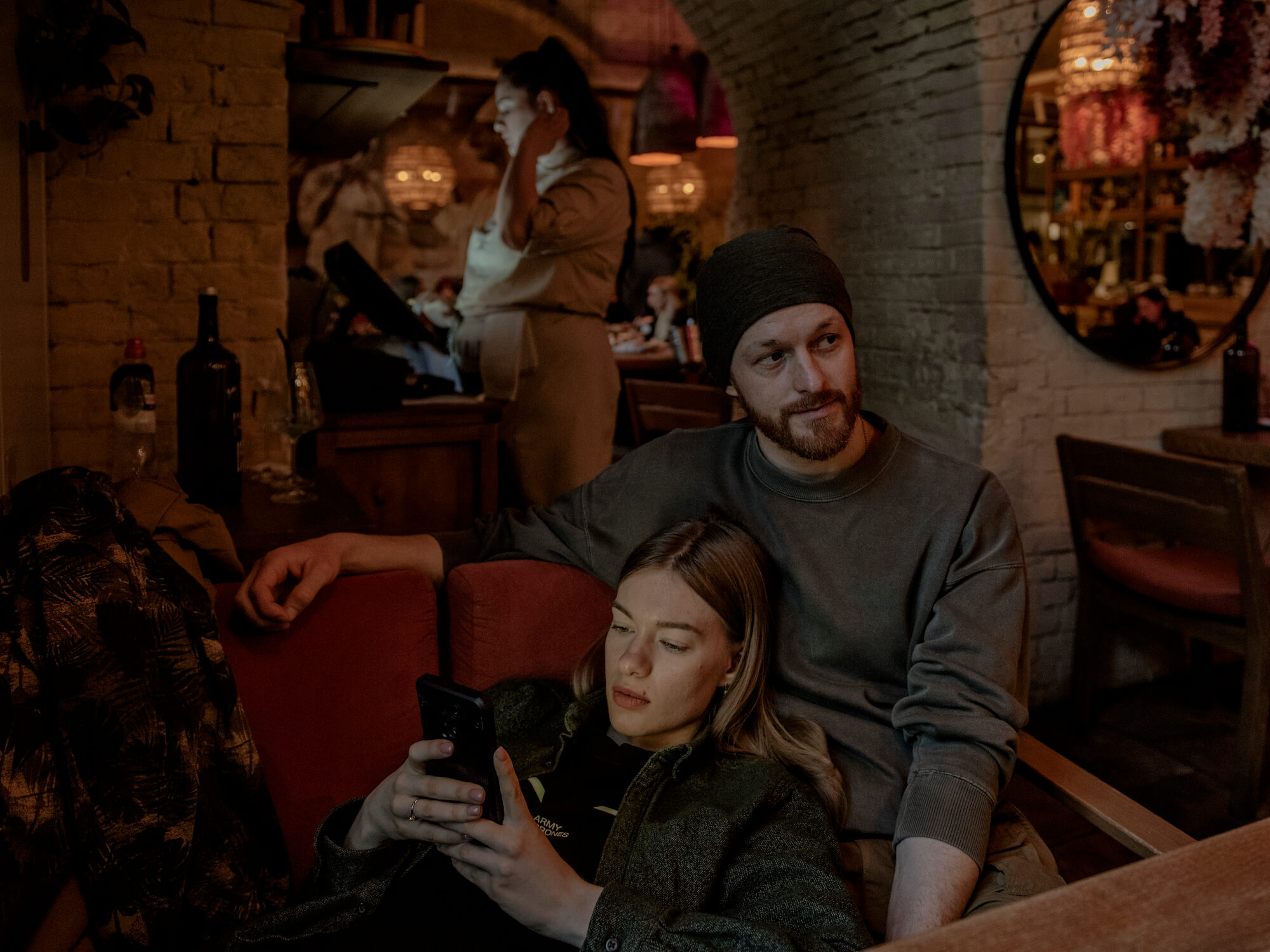
In the photo – Svitlana and her boyfriend. She is 25 years old, he is 31. At the time the full-scale war began, they had been dating for only four months. Although it may not seem like a long time, they felt a strong connection with each other. When her boyfriend joined the Armed Forces, Svitlana suggested using cryogenic freezing services to have some assurance for the future. She told me, “We are sending our best men to their death. What will be left for us if they don’t come back?”
If it weren’t for the war, this couple wouldn’t have reached such decisions so quickly. The war forced them to skip many romantic stages of their relationship and immediately focus on significant matters. I was deeply moved by this forced maturity in such a young girl.
Da Vinci
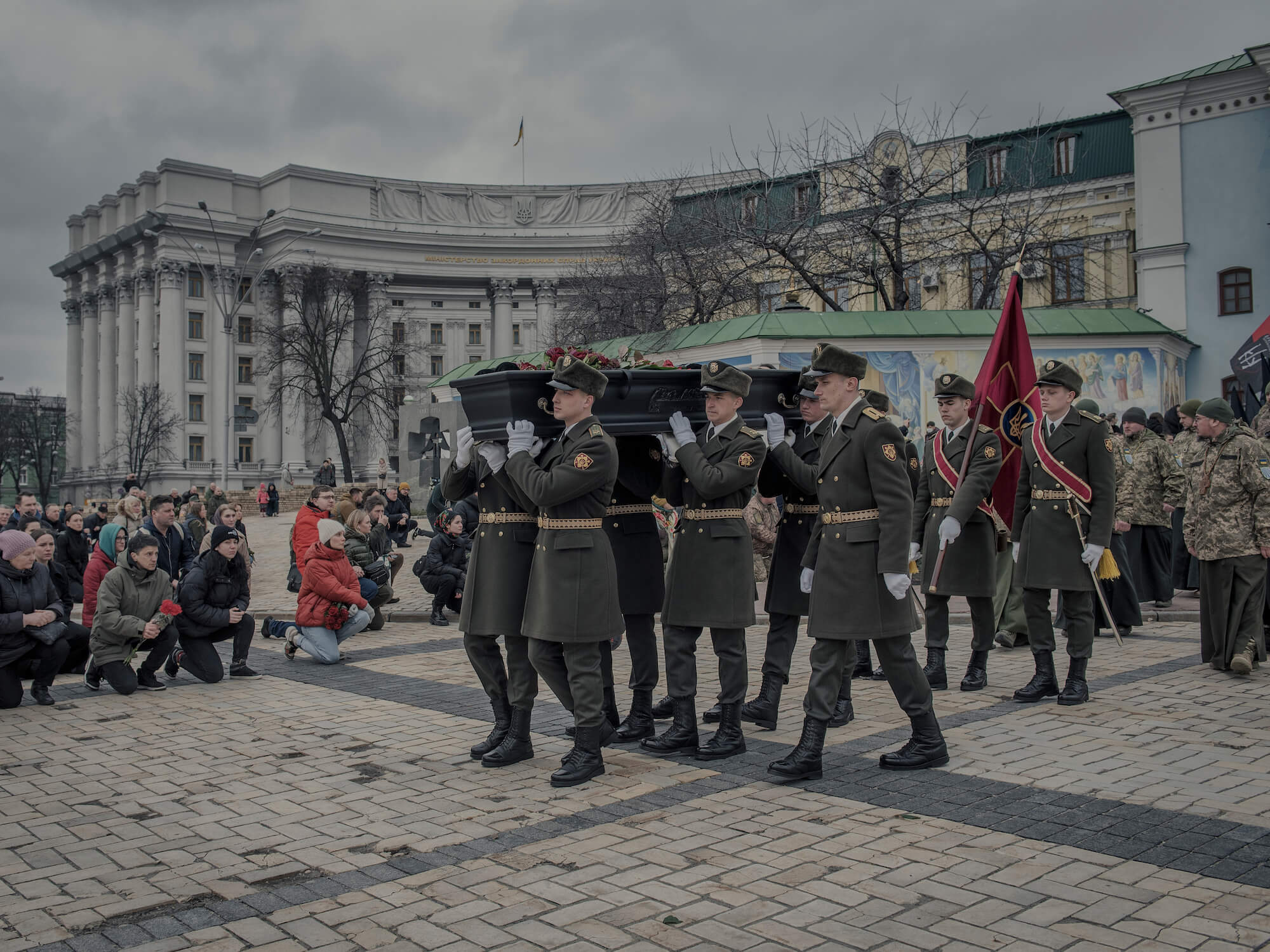
This is a photograph from the farewell ceremony for Da Vinci, Dmitro Kotsiubailo, which took place on March 10, 2023. When the coffin was carried out of the monastery walls, all the military and civilians in the square knelt down. The ceremony overwhelmed me with the number of people who gathered to bid farewell to Dmitro. Looking at the photograph, I find no words, only a sense of trembling and pain.
This publication was created with the financial support of the European Union. The content of the publication is the sole responsibility of DW Akademie / MediaFit Program for Southern and Eastern Ukraine and does not necessarily reflect the views of the European Union.
Others project materials

New and best

